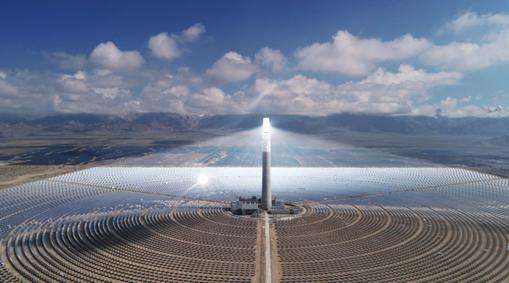How Solar Cells Work: Solar cells are a pair of devices that respond to light and can convert light energy into electricity. There are many types of materials that can produce photovoltaic effects, such as: monocrystalline silicon, polycrystalline silicon, amorphous silicon, gallium arsenide, copper selenium indium, etc. Their principles of power generation are basically the same. The process of generating photoelectric energy is described using crystals as an example. Crystalline P-type silicon can be doped with phosphorus to obtain N-type silicon, forming a PN junction. When light irradiates the surface of the solar cell, part of the photons are absorbed by the silicon material; the energy of the photons is transferred to the silicon atoms, causing the electrons to migrate and become free electrons which accumulatent on both sides of the P-N. Junction to form a potential difference. When the external connection When a circuit is turned on, under the action of this voltage, a current will flow through the external circuit to produce a certain output power. The essence of this process is as follows: the process of converting photon energy into electrical energy. The basis of solar cell energy conversion is the photovoltaic effect of the junction. When light irradiates the pn junction, an electron-hole pair is generated. Carriers generated near the internal junction of the semiconductor are not recombined and reach the space charge region. Attracted by the integrated electric field, the electrons circulate in the n. region and the holes flow into the pn region, as a result, the n zone stores excess electrons and the p zone has excess holes. They form a photogenerated electric field near the opposite pn junctionin the direction of the potential barrier. In addition to partially compensating the effect of the barrier electric field, the photogenerated electric field also makes the p region positively charged and the N region negatively charged. An electromotive force is generated in the thin layer between the N region and the P region. is the photovoltaic effect. At this time, if the external circuit is short-circuited, a photocurrent proportional to the incident light energy will flow through the external circuit. On the other hand, this current is called short circuit current if both ends of the PN junction. are in an open circuit, because electrons and holes flow in the N region and the P region respectively, which makes the Fermi energy level of the N region higher than that of the P region, and a potential difference is generated between the two Fermi levels. This value can be measured and is called open circuit voltage. Since the junction isforward biased at this time, the above short circuit photocurrent is equal to the forward current of the diode, and thus the value of the potential difference can be determined. 111
How solar energy collects electricity and why. . . Is it also possible to store electricity?
Introduction How solar energy collects electricity and why. . . Is it also possible to store electricity? How Solar Cells Work: Solar cells are devices that respond to light and can convert light energy into electricity.














